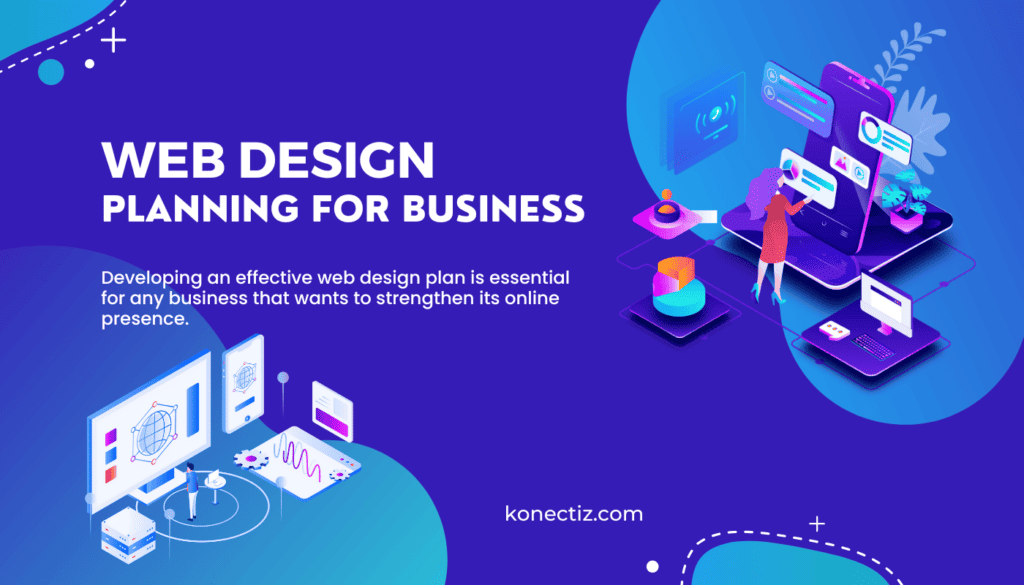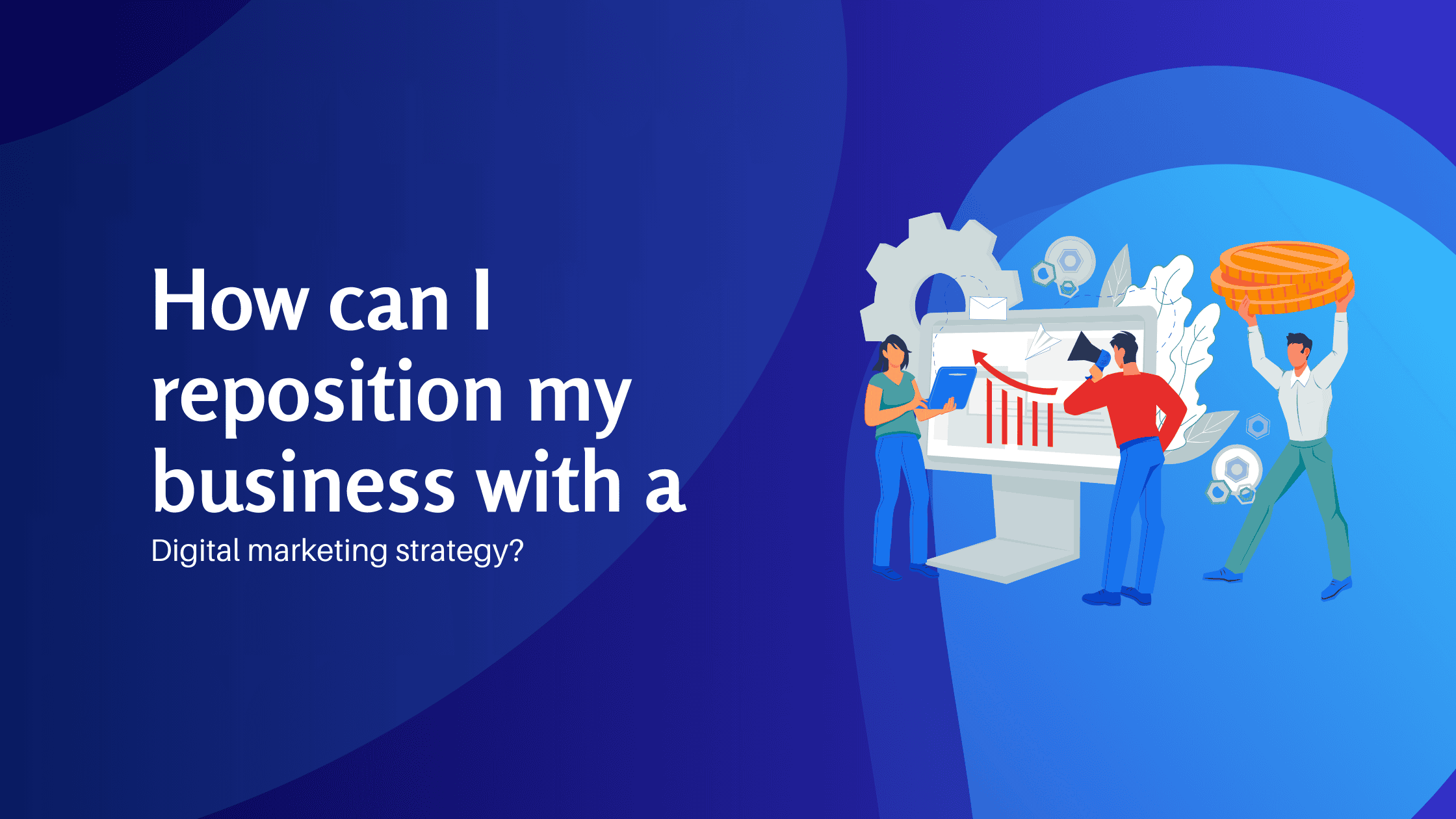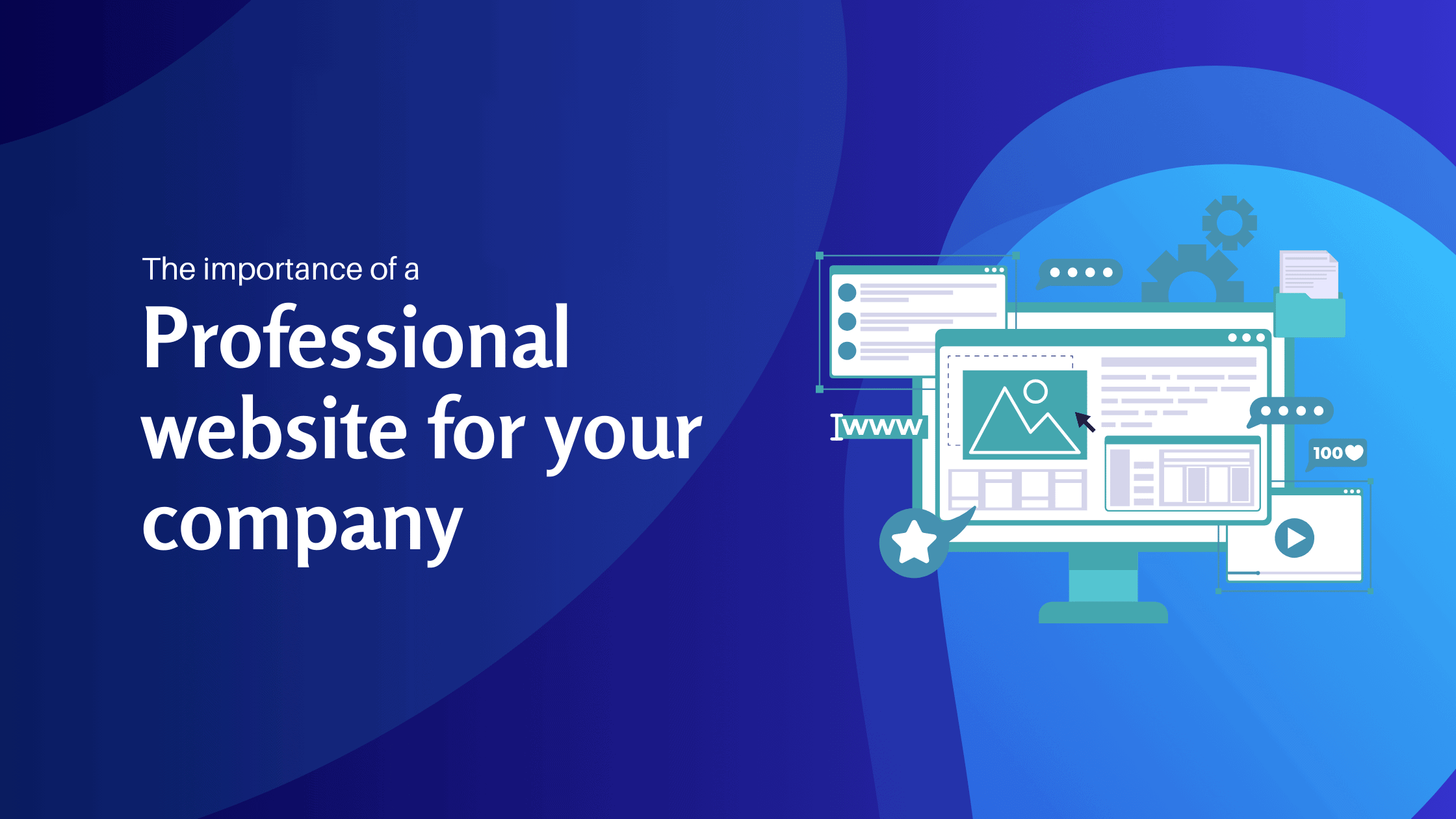Introduction: what is web design?
Web design is a term used to describe the process of creating and building web pages. The web design definition refers to the process of planning, creating, and maintaining websites. It involves various disciplines such as graphic design, user interface (UI) design, user experience (UX) design, search engine optimization (SEO), and content creation. The main goal of web design is to create an engaging and responsive website that attracts and retains visitors.
Nowadays web design is an essential aspect of modern-day business and marketing. With the increasing popularity of online shopping and e-commerce, having a well-designed website can be the difference between success and failure. A good website not only helps businesses to reach a wider audience but also establishes their brand identity and credibility. Websites can also be used for lead generation, customer engagement, and content marketing. The role of web design in the digital world is constantly evolving. As technology advances and user behaviours change, web designers must adapt their strategies and techniques to stay relevant and practical. This requires a continuous process of learning, experimentation, and innovation.
How does it help you achieve your goals?

Web design is an essential component of creating a website. It can help you achieve your goals by enabling you to create a website that is visually appealing, user-friendly, and meets your business objectives. Web design involves various elements that work together to deliver a website that is effective, attractive, and easy to use. In this article, we will discuss how web design can help you achieve your goals and the key elements involved in website design.
The art of creating an online presence
Web design involves various components, such as layout, color, typography, images, and navigation, which all work together to create an attractive and functional website. Web design is crucial for businesses that want to establish an online presence and reach out to potential customers.
The power of user experience
Building your brand online
Beyond aesthetics: SEO
Web design can also help you reach your goals by improving your website’s search engine optimization (SEO) performance. A well-designed website with optimized content, keywords, and meta tags can help improve your search engine rankings, making it easier for potential customers to find your site. A website that is easy to navigate, well-organized, and has fast loading times can also help boost your SEO rankings.
Foundations of website design
When it comes to achieving your website design goals, understanding the basics is essential. A website’s layout is the arrangement of its elements, such as text, images, and buttons. A well-designed layout should be easy to navigate and understand, with a logical flow that guides users through the site. Typography refers to the choice of fonts used on a website, and can significantly impact its overall look and feel.
The Power of visual communication
Guiding your visitors
Web design elements, such as navigation, responsiveness, and accessibility, are also essential for achieving your website design goals. Navigation refers to the menus, links, and buttons that allow visitors to move around the site. A properly designed navigational system should be easy to understand and operate, with clear labels and logical organization.
Designing for the mobile era
Inclusive web design
The role of web design in digital marketing strategies
Web design plays a crucial role in digital marketing strategies. A well-designed website can greatly enhance a company’s online presence and help attract and retain visitors. The design of a website can influence user behavior and engagement, making it an important aspect of digital marketing.
- Web design marketing involves the use of various design elements and techniques to create websites that are not only visually appealing but also effective in achieving marketing goals. Effective web design marketing can help to improve website traffic, increase conversions, and generate more leads and sales.
- Website designing tips for marketing success include the use of clear and concise messaging, intuitive navigation, and responsive design. Clear and succinct messages must be written in language that is easy to understand and relevant to the target audience. Intuitive navigation involves making it easy for visitors to find the information they are looking for on the website. Responsive design involves ensuring that the website is optimized for different screen sizes and devices, making it accessible to a wider audience.
- Website designs that convert visitors into customers are those that are designed with the user in mind. User-centric design involves understanding the needs and behaviours of the target audience and designing a website that meets those needs. This can involve the use of user personas, user testing, and data analysis to identify user pain points and optimize the user experience.
- One of the key ways in which web design can contribute to digital marketing strategies is through the use of visual content. Visual content such as images, videos, and infographics can be used to engage visitors and convey information more engagingly and memorably. Visual content can also be optimized for search engines, improving the website’s visibility and ranking in search engine results pages (SERPs).
- Another important aspect of web design in digital marketing strategies is the use of calls to action (CTAs). CTAs are used to prompt visitors to take specific actions, such as filling out a contact form or making a purchase. To be effective, calls to action must hold attention, be clear, and address the visitor’s needs and interests.
- Web design can also contribute to digital marketing strategies through the use of landing pages. Landing pages are designed to be highly focused and targeted, to encourage visitors to take a specific action. Landing pages can be optimized for search engines, making them an effective way to attract targeted traffic to a website.
The role of web design in the digital world
Web design has become increasingly important in the digital world. A well-designed website can attract and retain customers, convey a brand’s message, and ultimately increase sales. Web design encompasses a variety of disciplines, including website design, web development, and UI/UX design. In this section, we will explore the role of web design in the digital world and discuss how it can benefit businesses and users.
Website design is the process of creating the visual layout of a website. This includes selecting colors, fonts, and images that convey the brand’s message and attract the user’s attention. The objective of website design is to develop an aesthetically pleasing and easy-to-use website that captivates visitors and motivates them to remain on the site.
Web development is the process of developing a technical framework for a website. This includes coding, database management, and server configuration. The goal of web development is to create a website that functions smoothly and delivers a great user experience.
Web design is a crucial player when it comes to branding. A website is often the first point of contact between a customer and a business, so it’s important to create a positive impression. A well-designed website that reflects the brand’s values and personality can help build trust and loyalty with customers.
Mobile Optimization in today’s mobile-first world, it’s essential for websites to be optimized for mobile devices. Web design plays an important role in ensuring that a website is easy to use on a smartphone or tablet. This includes creating a design suitable for various screen sizes and optimizing page loading times for mobile devices.
Web design plays its part in a website’s search engine optimization (SEO). Search engines like Google prioritize websites that are well-designed, user-friendly, and provide a great user experience. By focusing on web design, businesses can improve their SEO and attract more organic traffic to their website.
By creating a website that is easy to use and provides a great user experience, businesses can encourage visitors to take action, whether that’s making a purchase or filling out a form. By optimizing for conversions, businesses can improve their bottom line and increase revenue.
A good Web design ensures that a website is accessible to all users, regardless of their abilities. This includes creating a website that is easy to navigate with a keyboard, providing alt text for images, and ensuring that the website is compatible with assistive technologies like screen readers.
A website that looks professional and is easy to use can create a positive impression and help customers feel confident in their decision to do business with a particular company. It helps establish trust and credibility with customers.
Social media marketing is an essential component of digital marketing, and it plays a significant role in web design. Web designers must consider how social media platforms will be integrated into the website’s design. Social media integration involves incorporating social media icons, sharing buttons and feeds into the website’s design to make it easier for users to engage with the brand on social media.
Email marketing is a highly effective way to connect with website visitors and turn them into loyal customers. A well-designed website should have an option for visitors to sign up for a mailing list, allowing businesses to collect email addresses and other contact information.
Once you have a list of subscribers, you can use email marketing campaigns to communicate with them and keep them engaged with your brand. This can include sending newsletters, promotional offers, product updates, and other relevant content.
How to develop an effective web design plan for your business

Developing an effective web design plan is essential for any business that wants to strengthen its online presence. An effective web design plan implies the creation of a website that is not only visually attractive, but also functional, easy to use and search engine optimized. Here is a detailed guide on creating an effective web design plan for your business.
Establish objective
Understanding your target audience
Creating a user-friendly website
The third step is to develop a website layout and structure. This involves designing a layout that is easy to navigate and user-friendly. You should also consider the structure of your website, including the pages and sections that will be included.
Building your brand identity
The fourth step is to choose a color scheme and typography that reflects your brand and appeals to your target audience. A well-chosen color scheme and typography can help to create a cohesive and visually appealing website.
Captivating your audience
The fifth step is to create high-quality content that is relevant to your target audience. This includes written content, images, and videos that convey your message and showcase your products or services.
Maximizing your online presence
The sixth phase is to enhance your website’s search engine optimization (SEO). This entails utilizing suitable keywords and meta tags, constructing excellent content, and establishing high-quality backlinks to your website.
Continuous improvement
The final step is to test and refine your website. This involves reviewing user feedback and analytics data to identify areas for improvement and making changes to your website accordingly.
What are the most common technologies used in web design?
HTML5
HTML5 is a markup language used for creating the structure and content of web pages. It provides a standard way of describing the content of a web page and is essential for creating accessible and searches engine-friendly websites. HTML5 also provides a range of new features, such as video and audio playback, local storage, and canvas elements, which allow for more dynamic and interactive websites.
CSS
Javascript
JavaScript is a programming language used for adding dynamic functionality and interactivity to web pages. It allows web designers to create interactive forms, dropdown menus, image sliders, and other features that enhance the user experience. JavaScript also provides a range of libraries and frameworks, such as jQuery, React, and Angular, that make it easier to develop complex and scalable web applications.
Other technologies
Other technologies commonly used in web design include server-side scripting languages, such as PHP and ASP.NET, which are used for creating dynamic and database-driven websites. Content management systems, such as WordPress and Drupal, provide an easy-to-use interface for managing the content and structure of websites. Responsive design frameworks, such as Bootstrap and Foundation, are used for creating mobile-friendly and responsive websites that adapt to different screen sizes and devices.
The fundamentals of good website design
Good website design is essential for creating a positive user experience and achieving business objectives. Website design best practices include a range of web page design principles and modern web design principles that can help you create a website that is user-friendly, aesthetically pleasing, and functional. In this comprehensive overview, we’ll explore the fundamentals of good website design and cover some of the key concepts you need to keep in mind.
Simplicity
One of the most important web page design principles to keep in mind is simplicity. Good website design should be clean, uncluttered, and easy to navigate. A simple design helps users find what they’re looking for quickly and efficiently, without getting distracted or overwhelmed by unnecessary elements. When designing a website, it’s important to prioritize the most important information and features, and make them easy to access and use.
Responsiveness
Another important modern web design principle is responsiveness. Your website should be optimized for a range of devices, including desktops, laptops, tablets, and smartphones. Responsive design ensures that your website looks and works great on any screen size, and makes it easy for users to access your content and interact with your site, regardless of the device they’re using.
Navigation
Good website design includes an essential element known as navigation. It should be user-oriented and straightforward, with clearly labeled sections and organized content. Users must locate their desired information with ease, without the need to go through various pages or menus. Well-designed navigation also assists search engines in comprehending your website’s structure and content, which can enhance your search engine rankings.
Consistency
Accessibility
Typography
Color
Visual hierarchy
Mobile optimization
Search engine optimization
Having search engine optimization is just as vital as having a design that is easy to use for a website. Search engine optimization (SEO) entails optimizing a website’s structure, metadata, and content, as well as establishing high-quality backlinks from trustworthy sources to enhance its visibility and ranking on search engine results pages (SERPs).
By following SEO best practices and implementing effective techniques, businesses can increase their online presence and attract potential customers. Therefore, when designing a website, it’s crucial to prioritize both usability and SEO.
Load time optimization
Security
How to choose the right platform for your website development needs?
When it comes to web design and development, choosing the right platform is crucial. The platform you choose can impact your website’s design, functionality, and overall success. As such, it’s important to consider several factors when making your decision.
Different platforms are better suited for different types of websites. For example, in web design if you’re building an e-commerce site, you might want to consider a platform that has built-in support for online transactions, such as Shopify or WooCommerce. On the other hand, if you’re building a blog or content-based site, a platform such as WordPress might be a better choice.
Scalability is also an important factor to consider when choosing a platform in web design . As your website grows and attracts more visitors, you’ll need a platform that can handle increased traffic and storage requirements. Platforms such as Amazon Web Services (AWS) and Microsoft Azure offer scalable hosting options that can accommodate the needs of growing websites.
Ease of use is another important consideration when choosing a platform. If you’re new to website development or lack technical experience in web design, it’s best to choose a platform that is easy to use and navigate. Platforms such as Wix or Squarespace can be good choices for beginners as they offer a drag-and-drop interface and pre-designed templates.
Conclusion
In conclusion, it’s essential for businesses seeking to establish an online presence and engage with customers effectively to build a professional website. An effectively designed website has the potential to draw in and keep visitors, produce leads, and boost sales. Collaborating with a skilled web designer can result in a website that caters to your target audience’s requirements and preferences and helps you achieve your business objectives.
A professional web designer can help you to develop an effective web design plan that includes a website layout and structure, color scheme and typography, high-quality content, and optimization for search engines. They can also offer their expertise in web development, UI/UX design, and graphic design, ensuring that your website is aesthetically pleasing, easy to use, and fully functional





